Looking for a rope to help you do a particular task? Don’t buy the first rope you see. Instead, do a bit of research about the rope’s strengths, weaknesses, and common uses. Don’t worry. We can help you with that. Below, we listed 5 types of rope based on material, their strengths, weaknesses, and common uses.
5 Types of Rope Based on Material
1. Kevlar
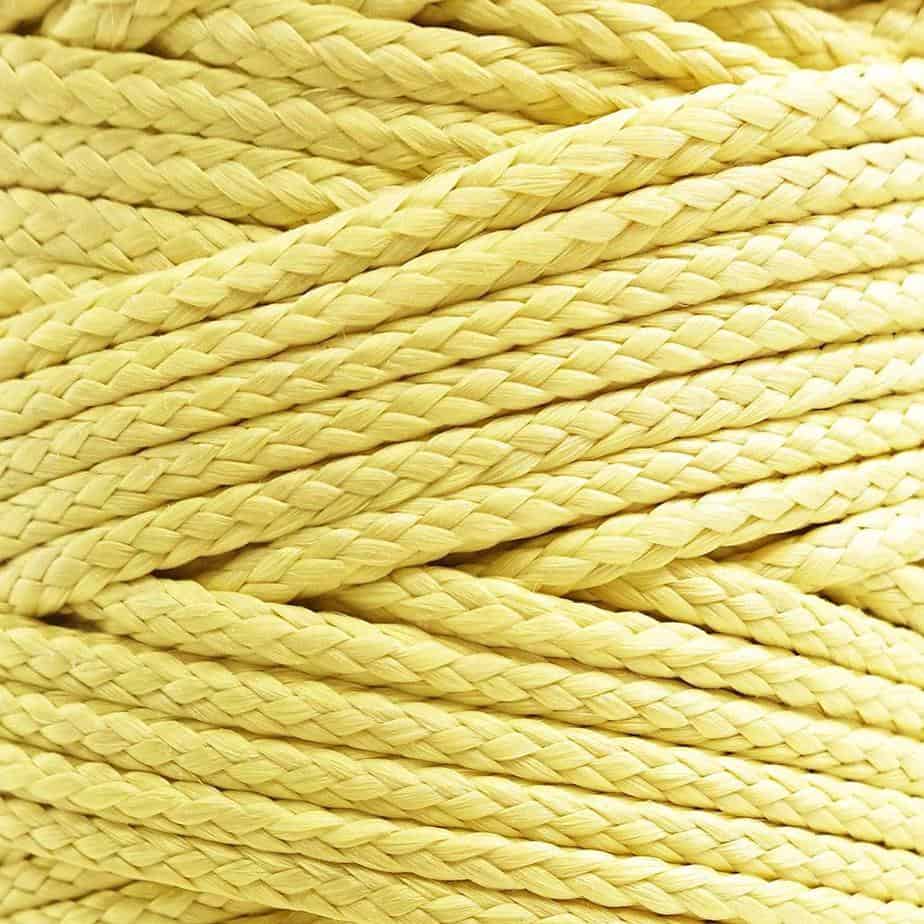
If you’re looking for a rope that is stronger than other types of rope, kevlar rope is your best bet. The material is so strong it is used to create bulletproof armors.
Strengths
The most notable strength of kevlar rope is, well, its strength. In fact, kevlar is stronger than steel when compared pound-for-pound. But that is not the only thing that this rope offers, of course.
The rope is also water-, flame-, stretch-, rust-, freeze-, and chemical-resistant. Kevlar rope has been known to be able to withstand extreme temperatures (up to 500 degrees) before it starts to weaken.
Due to its strength and resistance to many things, including extreme temperatures, kevlar rope is a great choice for applications both on land and sea.
Weaknesses
Kevlar rope is very strong, yes. But this strength refers to the rope’s tensile strength, not its compression strength. Its compression strength is poor, while its tensile strength is great.
What does that mean? The rope can withstand an intense pulling force. But the same thing can’t be said about an intense pressing force.
Another weakness is that kevlar doesn’t have good UV resistance on its own.
Common uses
Kevlar is commonly used for high-strength applications, non-stretch applications, and extreme temperatures.
2. Manila

Ever heard of manila rope? If you haven’t, just imagine the traditional rope. Yes, this is “that” rope used in a tug-of-war.
Strengths
The most important strengths manila rope has is its flexibility and durability. Unlike many other synthetic types of rope, manila doesn’t tend to snap haphazardly.
Not only that, but manila rope also doesn’t melt easily. It is an ideal choice for jobs that involve landscaping or pulling.
Not work-related but manila is among the most visually appealing ropes. It is no wonder why it is often used in DIY projects and home decoration.
Weakness
As good as it is, the manila rope has its own weakness, too. When it is wet, the rope will shrink. This is why manila rope is not ideal for marine applications.
Common uses
Manila is commonly used for rope ladder, exercise, gardening, decorations, and crafts.
3. Nylon

Manila and polypropylene may be solid options for many jobs. But what if you need a stronger rope? In that case, look no further than nylon rope.
Strengths
Nylon rope is rot resistant, UV resistant, and wear-resistant. These alone make this rope an ideal option for various jobs. The greatest strength of nylon, however, lies in its strength.
Other types of rope tend to be either strong or flexible. Not with nylon. Why? Because nylon has both. It can maintain its superior while being flexible.
This rope can be the right option for various jobs, especially for making anchor lines, towing lines, or pulleys.
Weaknesses
As amazing as it is, it turns out nylon does have weaknesses, too. Nylon rope is amazing when dry. The same can’t be said when the rope is wet, however.
When it is wet, the superior strength that nylon has is compromised. Not only that, but nylon rope also sins in water, making it a bad choice for marine applications.
Another weakness of nylon rope is that, when in high temperatures, the rope is susceptible to degradation.
Common uses
Nylon is commonly used in applications that need strength, towing, knot-tying, tie-downs, and anchors.
4. Polyester
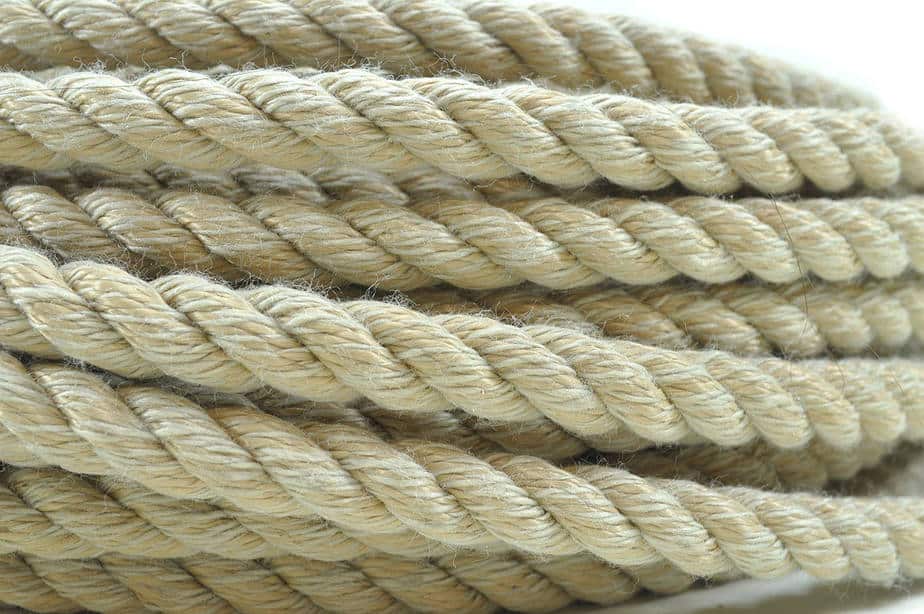
There are various types of synthetic ropes. One of them is polyester. Suitable for various projects, it is among the best ropes for general use.
Strengths
Similar to other synthetic ropes, polyester is also abrasion-resistant and UV resistant. Unlike nylon and polypropylene ropes, however, the polyester rope has stretch resistance.
When wet, this rope still retains its strength, not like nylon rope. This is why polyester is often used for sailing applications.
Overall, this type of rope is an all-rounder when it comes to cost, rot resistance, abrasion resistance, and UV stability. It also has plenty of solid colors available.
Weakness
This rope doesn’t float.
Common uses
Polyester is commonly used for general use, outdoors, marine use, sailing, and industrial use.
5. Polypropylene
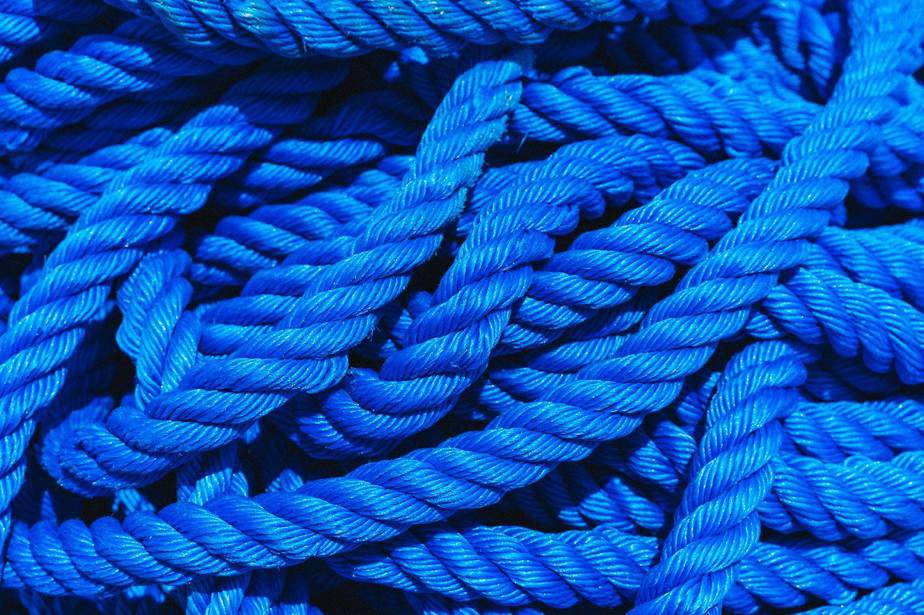
If you’re looking for a type of rope that can withstand a wet climate, look no further than polypropylene ropes.
Strengths
The first and foremost strength of polypropylene is that it doesn’t absorb water. This is the reason why the rope is a solid option when it comes to working in a wet climate and marine applications.
The second is related to the first. Not only the rope doesn’t absorb water, but it also floats in water. Due to this, polypropylene is often used to make swimming lanes.
The third is the rope is resistant to most chemicals, milder, mold, and oils.
Weaknesses
Now let’s talk about the weaknesses of polypropylene. Although it is an efficient choice for many jobs, this rope does have limitations.
For example, the rope has low abrasion resistance and low UV resistance. Placed under the sun, the rope can deteriorate at a fast rate. This rope also melts at a low temperature.
Another weakness is its low resistance to stretch. Meaning, if you stretch the rope out, it will not to its original size. This can be an advantage or disadvantage, depending on the nature of the job.
Common uses
Polypropylene is commonly used for marine applications, outdoor equipment, exercise, electrical work, and applications that require stretch.
Common Uses, What’s the Best and What’s the Worse for the Job
1. General use
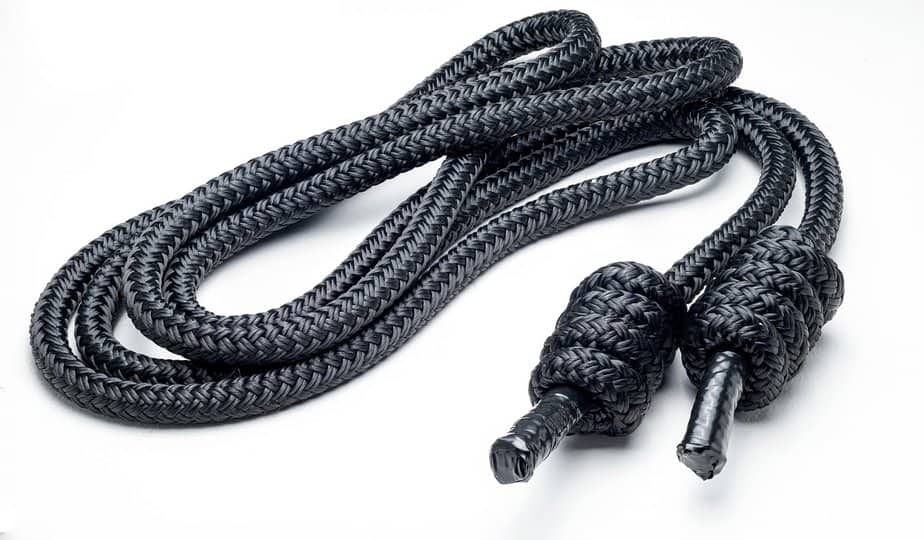
Want a rope that is an all-rounder? Polyester is a great choice for general use. Not only It is affordable, but it can also be used for various outdoor utility applications.
Another good alternative is nylon rope.
Avoid using cotton rope for general use.
2. Strength

When it comes to strength, not many types of rope can compete against nylon. Is it surprising that it is often used for pulling some of the heaviest loads?
Nylon rope not only has extraordinary strength, but it is also able to stretch. This is why many people choose it when they look for a rope that has strength.
Nylon is also UV-, wear-, and rot-resistance, making it the best option for pulleys, towing, or anchor lines.
If you’re looking for strength, avoid ropes like manila, sisal, and cotton ropes.
3. Durability
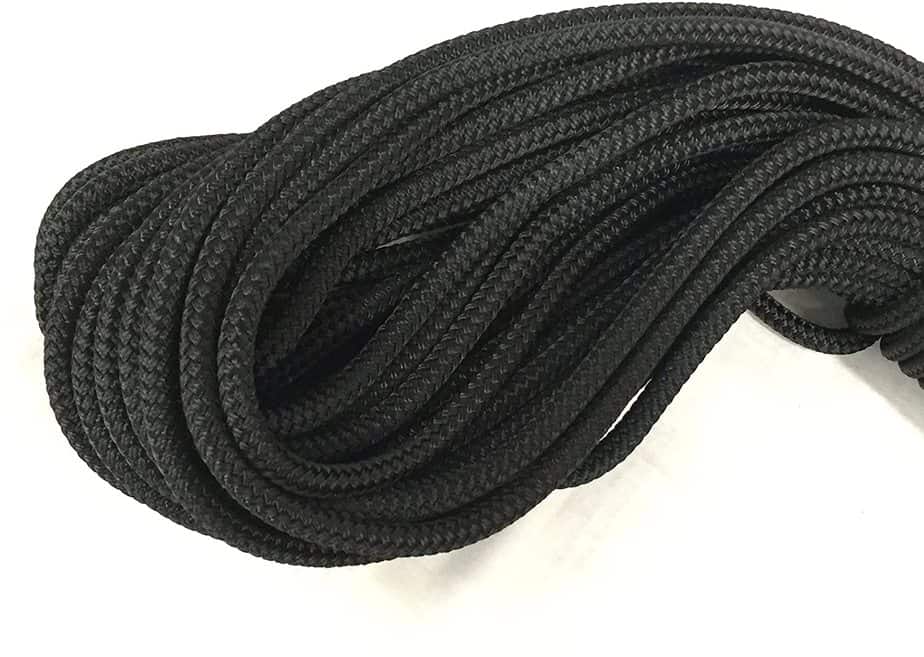
Some jobs require a rope that has excellent durability. Polyester is, without a doubt, the perfect option for that. Not only it is durable, but it also retains its strength when exposed to sunlight and water.
Avoid using manila, sisal, and cotton ropes if you want durability.
4. Stretch

For certain jobs, a rope that stretches is necessary. Your best options here are nylon and polypropylene ropes.
If you will be using the rope outdoors, choose nylon because it can last longer outdoors than polypropylene.
Avoid using kevlar and polyester ropes.
5. Non-stretch
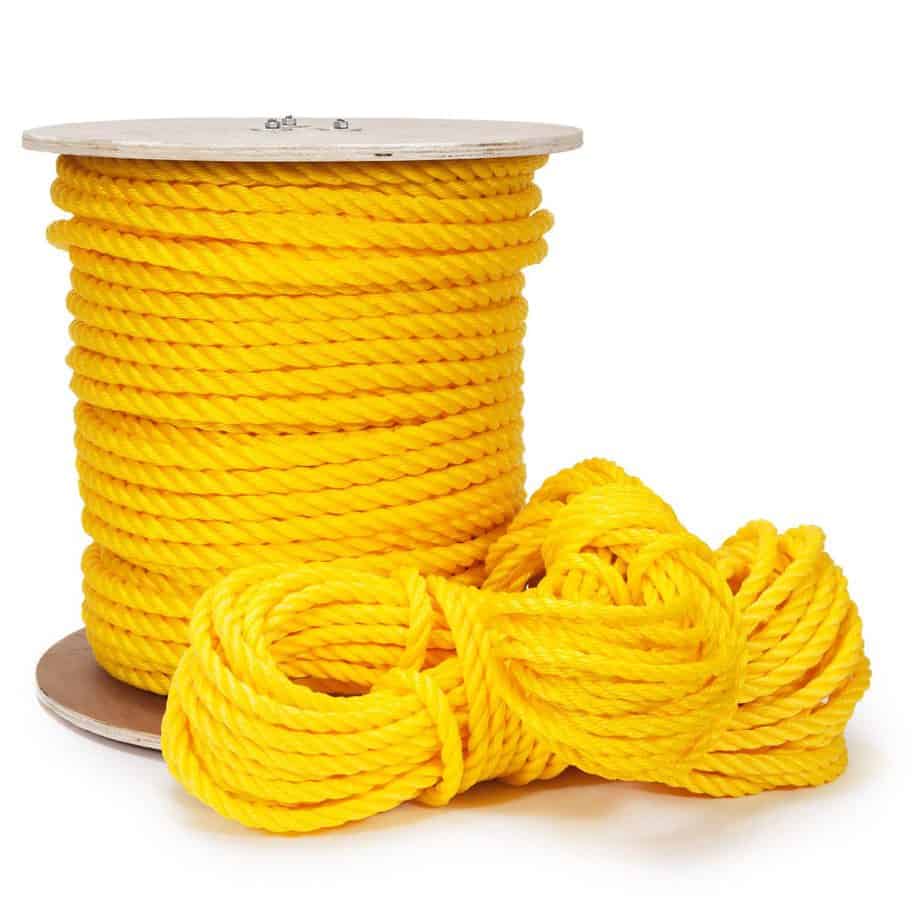
Looking for a rope that doesn’t strength? In that case, look no further than kevlar. Kevlar is a very strong rope that doesn’t stretch.
Do keep in mind that, when used outdoors, kevlar will break down faster. So be sure to choose a kevlar rope that is jacketed as such a rope will last longer.
Another good non-stretch rope is the polyester rope.
Avoid nylon and polypropylene ropes if you’re looking for a rope that doesn’t stretch.
6. UV Resistance

UV resistance might not be the first thing to consider when choosing a rope for an outdoor project. Nonetheless, it is important. Like our skin, rope too needs protection from UV light.
UV light, after all, can affect the integrity of a rope. So if you’re looking for a rope for your outdoor project, your best options are polyester and nylon ropes.
If you’re looking for UV resistance, the worst types of rope are cotton and polypropylene ropes.
7. Knot-tying
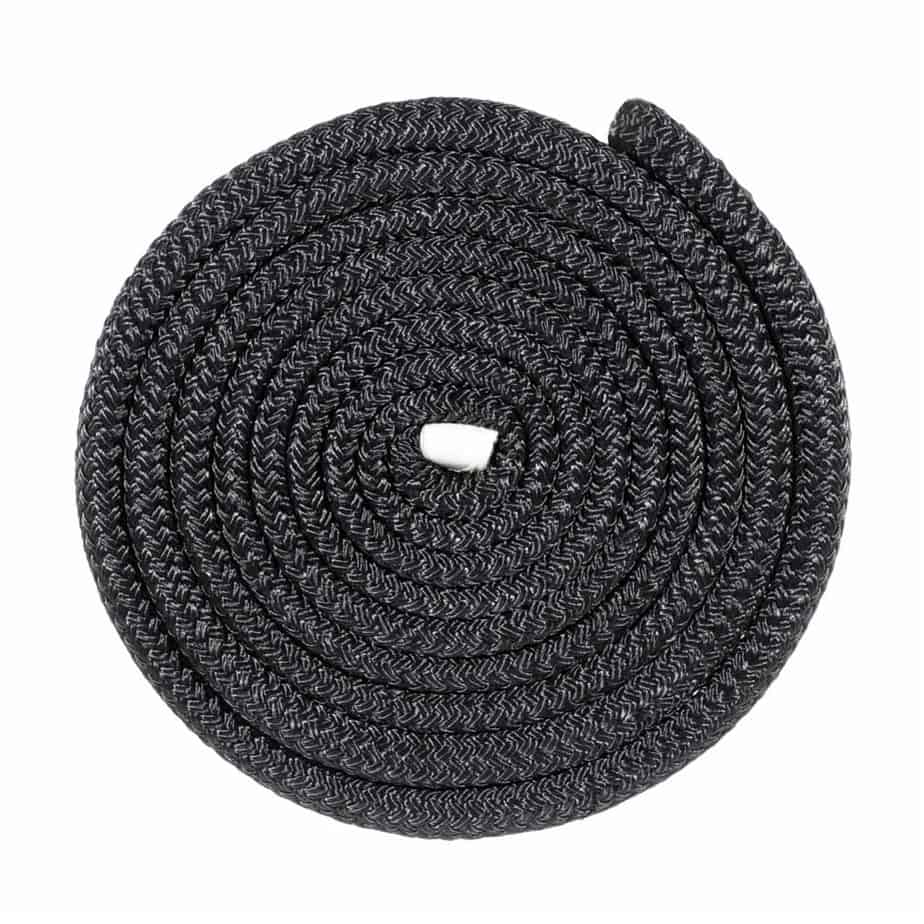
Technically, any rope can be used to tie a knot. However, some ropes are just too stretchy, stiff, and unpleasant to handle. When tying knots, flexibility is a more important consideration than strength.
The best rope for tying basic types of knots is nylon rope because of its synthetic fiber. If you want to tie more intricate knots, the best rope for that is manila rope as the rope can hold knots well.
The worst rope for knot-tying is polypropylene.
8. Tie-downs
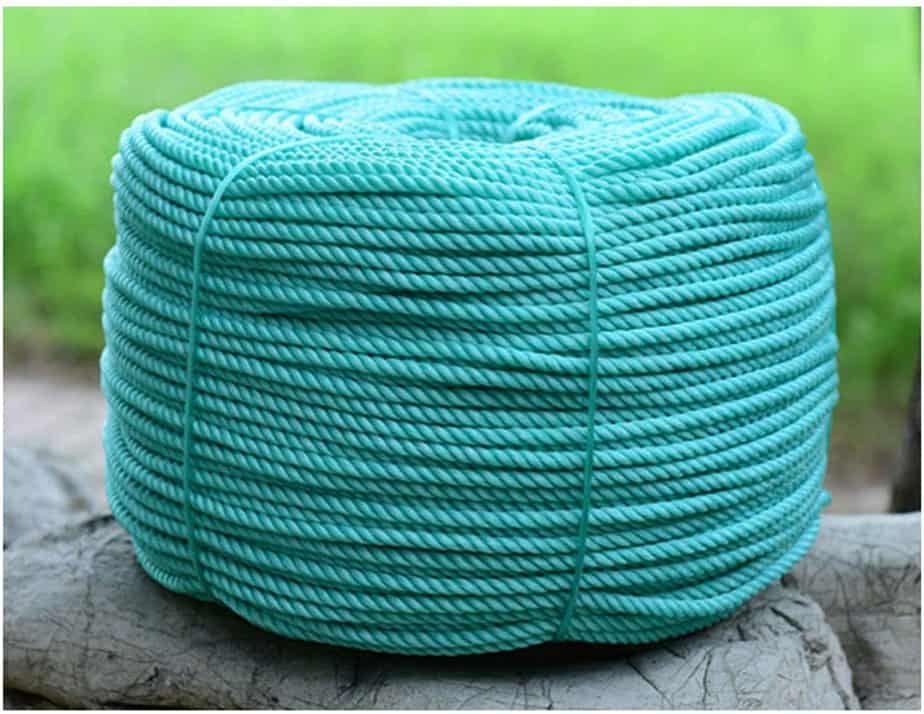
For tie-downs, nylon is definitely the perfect option. Nylon has superior strength, can stretch as well as maintain said strength over time.
In addition to that, nylon is UV- and chemical-resistant, which means its elasticity and strength are unlikely to be affected in most environments.
Keep in mind that when exposed to water, nylon rope will lose a bit of its strength although barely enough to be noticeable.
Avoid using polypropylene for tie-downs.
9. Towing
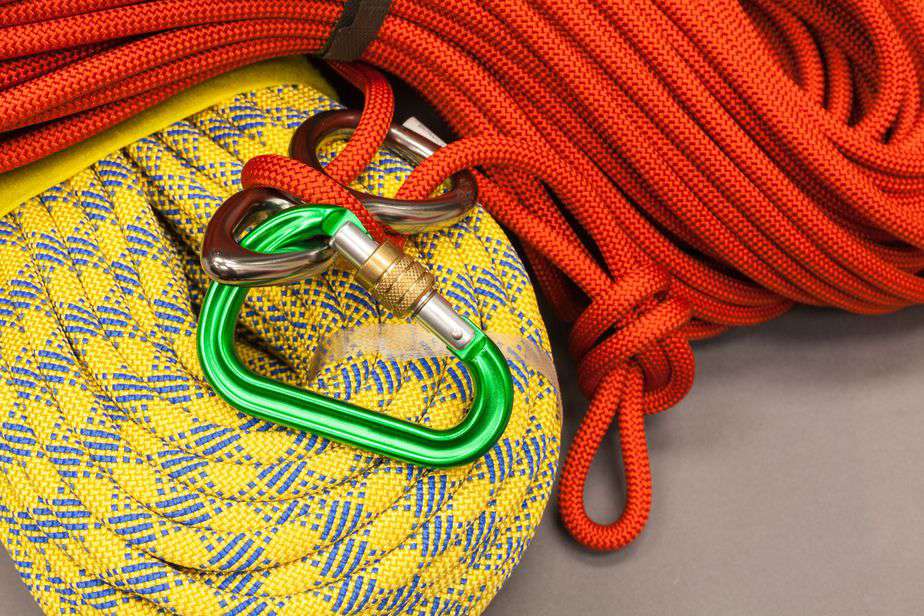
When it comes to towing, you will need a rope that is strong, thick, and can absorb shock. So the best rope for towing is nylon rope.
Because strength, thickness, and shock absorption are necessary, avoid using cotton, manila, and polypropylene ropes.
10. Macrame
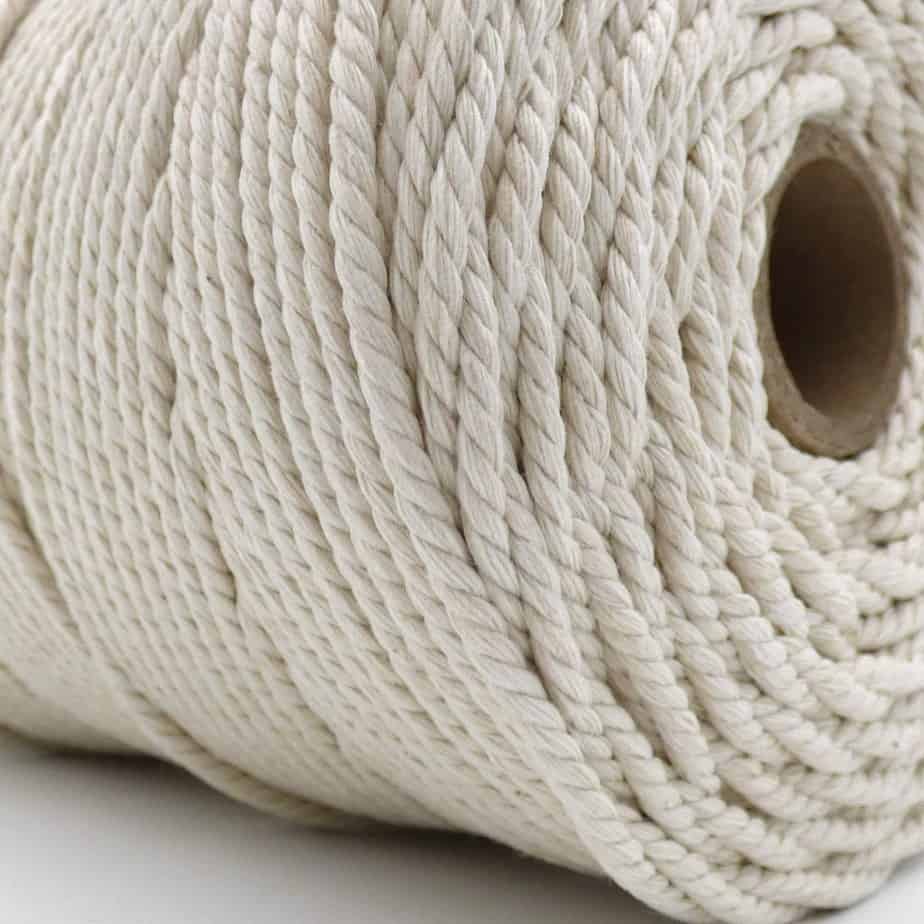
For macrame, you want a rope that can knot easily and easy on the hands. What kind of rope fits the bill? Yes, the answer is the cotton rope. Another excellent alternative is the polyester rope.
It is a good idea to buy two ropes with different thickness and try each rope. That way you will know the best one for macramé.
Avoid using sisal and polypropylene ropes for macramé.
11. Flagpoles
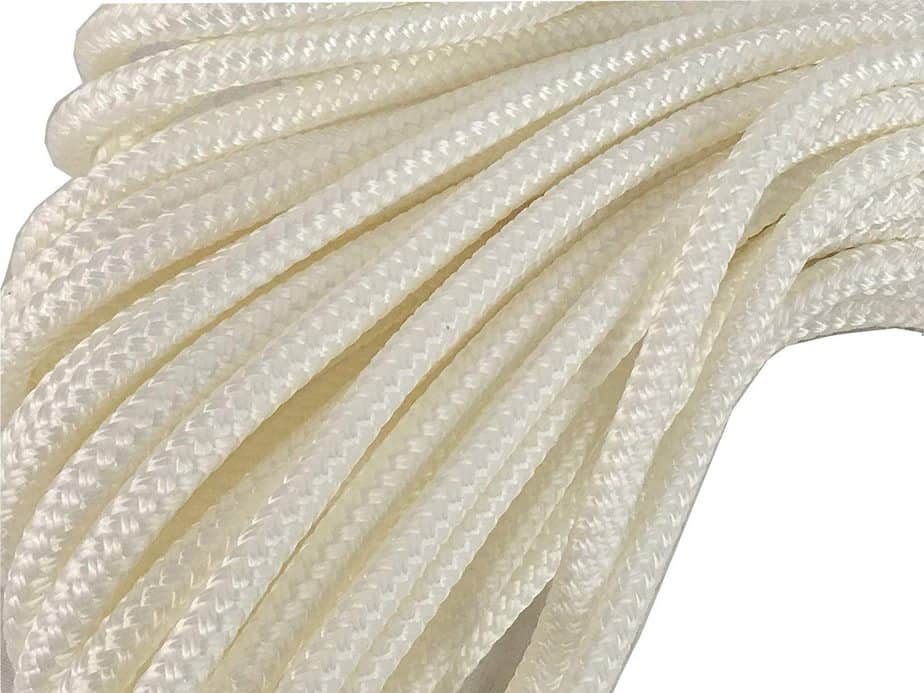
Polyester is the best type of rope if you want a flagpole rope. It has great abrasion and UV resistance as well as low stretch.
Remember to consider the height of the pole when looking for a flagpole rope. For example, if your pole is 50 feet, you will need 100 feet long rope. As for the diameters, the most common ones are 1/3 and 5/16.
The worst rope for a flagpole is polypropylene rope.
12. Scratchingpost
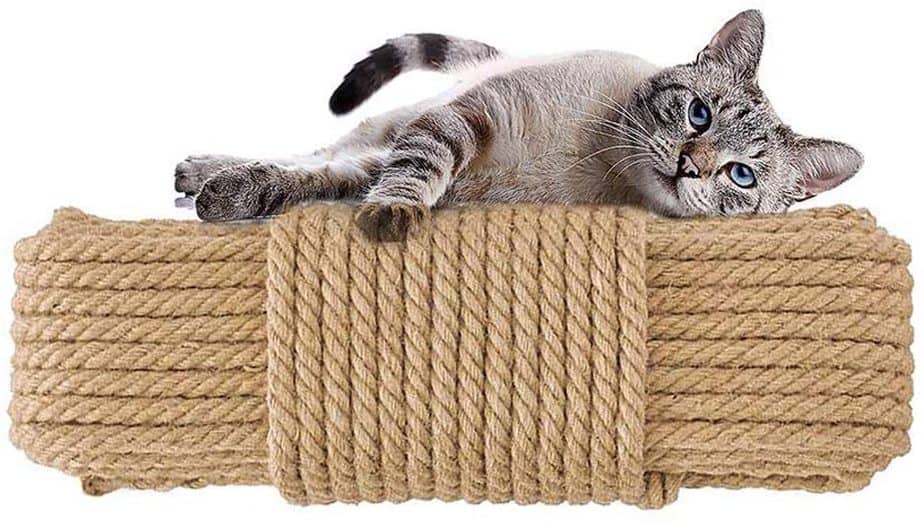
You have a cat and you want to give it a scratching post. What type of rope suits that job? Here’s the answer: sisal rope.
Sisal rope is very durable and cheap. The rope also has a rough texture, which is why it is very appealing to cats.
Because of its texture, you need not worry about your feline companion making a mess. The rope can handle the job just fine.
Avoid using manila rope if you want to make a scratching post for your cat.
13. Clothesline
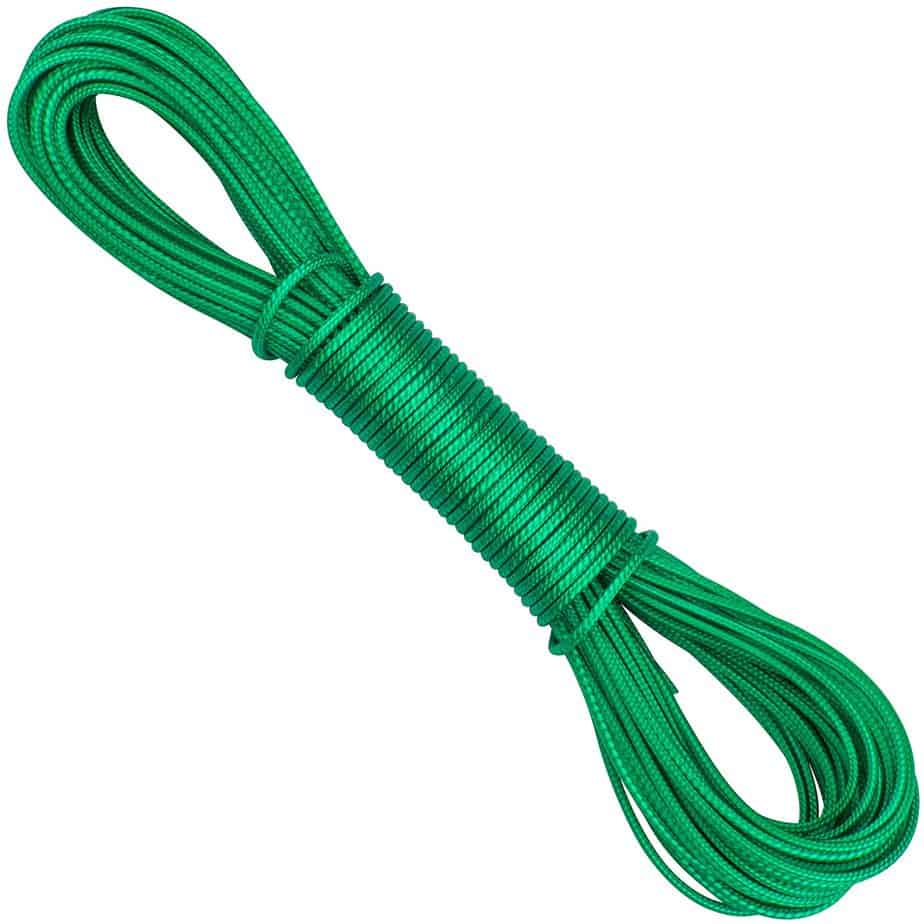
For clothesline, the best rope is polyester. The rope can last for a long time and is UV-resistant. Avoid using polypropylene rope if you want a rope for a clothesline.
14. Marine use

In marine industries, ropes have many uses. For example, towing and netting. These two tasks require ropes. Of course, there are still many tasks that require rope in marine industries.
The best type of rope to use in marine industries is polyester. Specifically, a solid braid style one. The polyester rope doesn’t shrink when it is wet. Not only that, but it is also abrasion- and UV-resistant.
Polyester is also inexpensive, chemical- and mold-resistant, making it a solid option when it comes to marine use.
For marine use, avoid using the cotton rope. Cotton rope is the worst for marine use because, being a natural fiber, not only it absorbs water but it also moisture easily.
Since in a marine setting the rope will be exposed to the elements constantly, the cotton rope just doesn’t fit the bill. If you use a cotton rope, it will rot real quick. So, avoid using it.
15. Dock lines
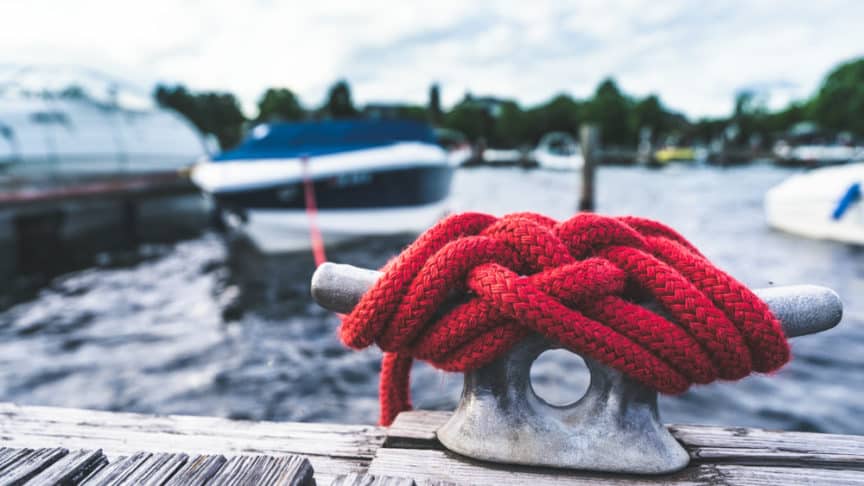
Dock lining requires a rope that is not only strong but also can stretch, hold up over time, and absorb shock. As such, the best type of rope for this is nylon.
When you’re looking for rope for dock lines, you should consider how you will be using the rope. For example, will you be using the rope from your home port? Or perhaps for your permanent slip?
Other than nylon, you can also use polypropylene rope.
Avoid using sisal rope for dock lines.
16. Boat rope

You can separate boats and rope. Blocks and tackles, winches, rigging, mooring lines, anchors rodes, all require ropes.
If you’re looking for a boat rope, your best option is polyester. This type of rope is strong enough for just about any boating needs, will retain its strength even if it is exposed to water, and wears well.
The polyester rope doesn’t stretch much, too. This is why it is the ideal rope for towing lines, anchor rodes, and rigging.
Similar to marine use, the worst rope for boat purposes is cotton. Remember, ropes used for boating are often submerged in water.
Cotton rope will not only soak up and moisture but also become brittle and rot. You want none of these, of course. A boat rope should be durable. Cotton rope is just too absorbent for the job.
17. Crossfit
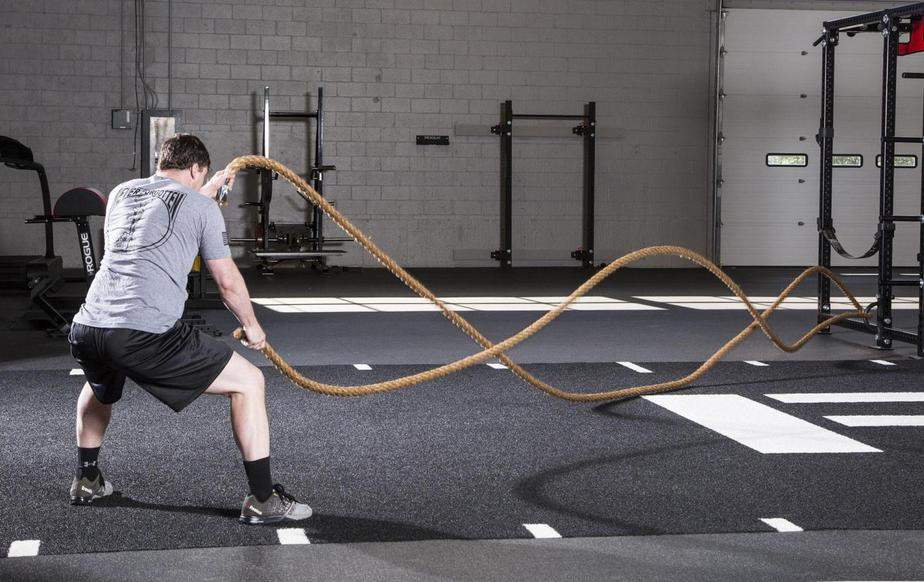
Who doesn’t know Crossfit? Crossfit is one of the two hottest workout trends today. To get the best results from your workout, you need the best equipment. Of course, that includes rope as well.
What is the best rope to use for Crossfit? You can use either polyester or polypropylene rope. Make sure to get a thick twisted braid one as it will provide the weight and strength necessary for the workout.
Ropes used for workouts should be fluid but not stretch much. Both polyester and polypropylene fit that. Polyester and polypropylene are easy to clean up as well.
For Crossfit, you want to avoid using a cotton rope. Cotton absorbs moisture, something that you don’t want when it comes to workout. After all, who wants their workout rope to soak up the sweat?
To make things worse, cotton is also difficult to clean. If you use a cotton rope for Crossfit, it will start to smell sooner than later.
18. Outdoor use
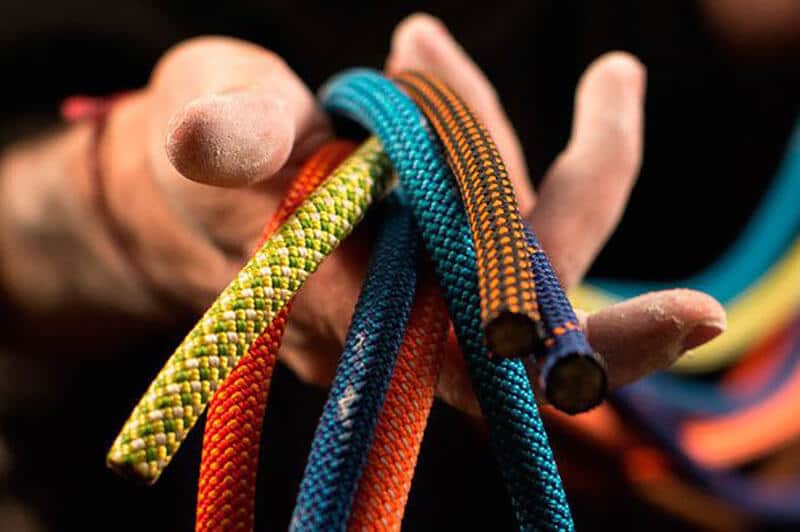
In an industrial setting, polyester rope won’t do well. But in an outdoor one, this is the best rope. Why? Because polyester’s strength is not affected by water, it is durable and UV resistant.
Another best choice for outdoor use, specifically for activities like camping or hiking, is the manila rope. Manila rope ties easily, maintains its strength for a long time and resists damage from sunlight.
For outdoor use, the worst rope is the kevlar rope.
19. Camping
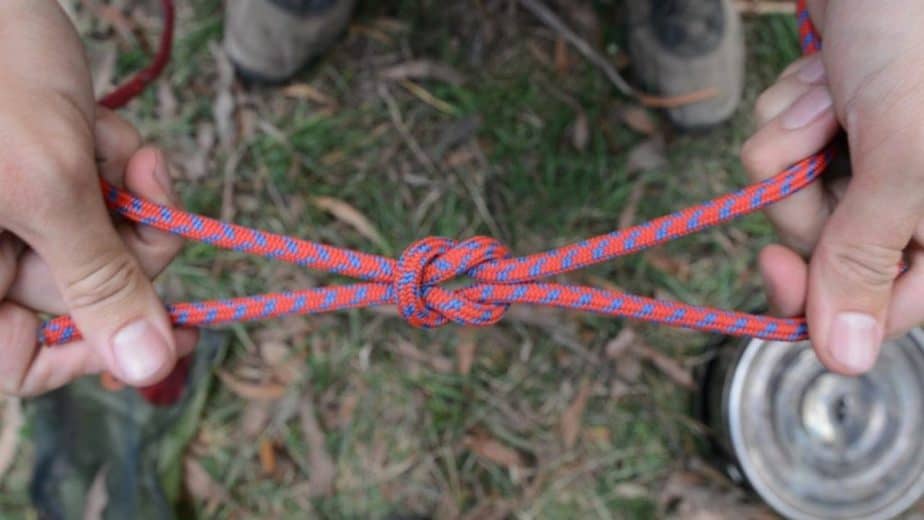
For camping purposes, you want a multi-purpose rope that can be used for securing items, climbing, making a clothesline, etc.
What is the best type of rope for that? The answer is polyester and polypropylene ropes. These two are true multi-purpose ropes you can use for many functions.
Both are hydrophobic, too, so no need to worry about moisture.
If you want a rope that knots well, get polyester or polypropylene in twisted or braided form. Why? Because in such a form, the ropes will hold a knot well.
Of the two, polypropylene is the cheapest option. Meaning, if you buy a polypropylene rope, you get a rope that is flexible, strong, lightweight, and chemical-resistant, all that for a low cost.
While polypropylene is inexpensive, polyester tends to last longer. So, consider these factors when buying a rope for camping purposes.
When you’re out camping, you want to avoid using cotton rope as it has low resistance to elements, especially water.
20. Hammock
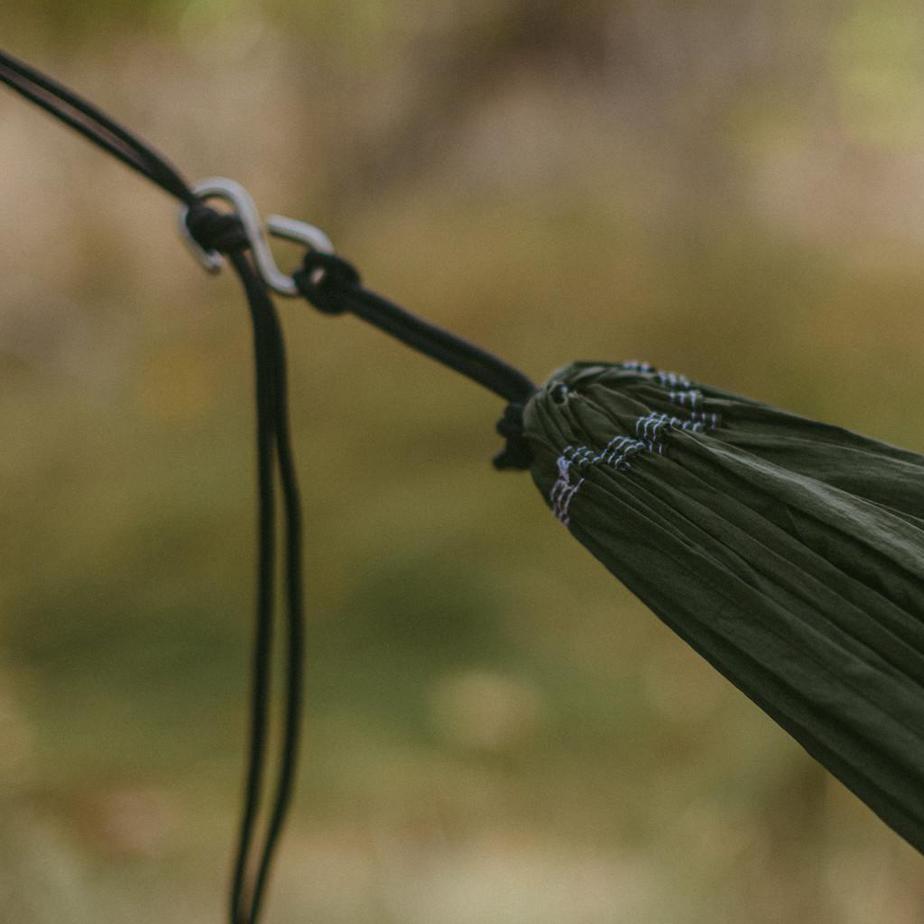
It is summer and you want to enjoy the warm days on a hammock. Naturally, you don’t want your relaxing session disturbed. The question is, what is the best rope to hang the hammock?
For hammocks, you can use either polyester or cotton. Cotton is easy on the hands. But, being a natural fiber, it will breakdown over time. Cotton is a good choice if you’re using it for the short-term.
For long-term use, use a polyester rope.
You want your hammock to be secured by a strong, UV-resistant rope that can stretch. Polypropylene has none of these, so avoid using it for your hammock.
Remember, a rope for a hammock has to be strong enough to support your weight. That is why you want to choose a strong rope like cotton or polyester.
21. Rope ladder
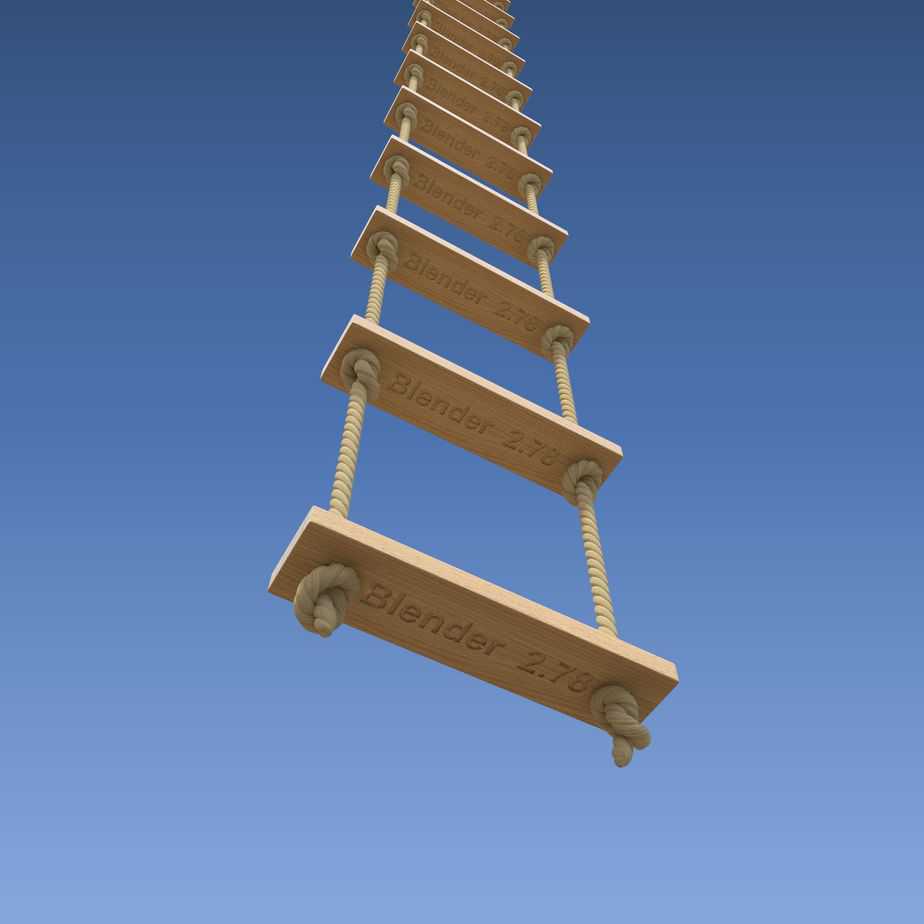
Planning to make a rope ladder? If the answer is yes, then look no further than manila rope. Manila rope is an organic rope made from natural fiber.
When paired with wood, the grip that manila rope provides is always better than that of polyester or nylon. This makes it the perfect choice for a rope ladder.
When you make a rope ladder, you want one that lasts long, abrasion-resistant, absorbs water well, and doesn’t deteriorate when exposed to the sun. Polypropylene has none of these, so avoid using it for a rope ladder.
22. Tree swing

When it comes to installing a tree swing, you have two options. The first one is by using bolts. The second one is by using ropes. Let’s say you’ve decided to use a rope. What is the best rope for a tree swing?
For tree swing, you want a strong rope that can withstand the elements, and has a low stretch. While most synthetic ropes can do the job, polyester is the best option as it has these qualities.
Polyester rope is strong, holds up really well under most elements, and has a low stretch.
While most synthetic ropes can be used for tree swing, the same can’t be said about natural ropes. In fact, you want to avoid natural ropes when you want to make a tree swing.
Natural ropes, such as sisal, cotton, and manila, are not as strong as their synthetic counterparts. They also don’t hold up well under the elements over time.
A tree swing must be safe to use. You don’t want to compromise safety. It is best to stick to the best options.
In case you still want to use a natural rope for your tree swing, you should change it every 6 to 12 months.
33. Farming

Working on a farm and needs a rope to help you? Polyester will be your best friend. Polyester can be tied and untied easily. On top of that, the rope is also strong and elastic, making it the perfect rope for farming.
If you want the best rope for farming, look for a solidly braided polyester rope.
Avoid using polypropylene rope for farming purposes.
34. Gardening tie-ups
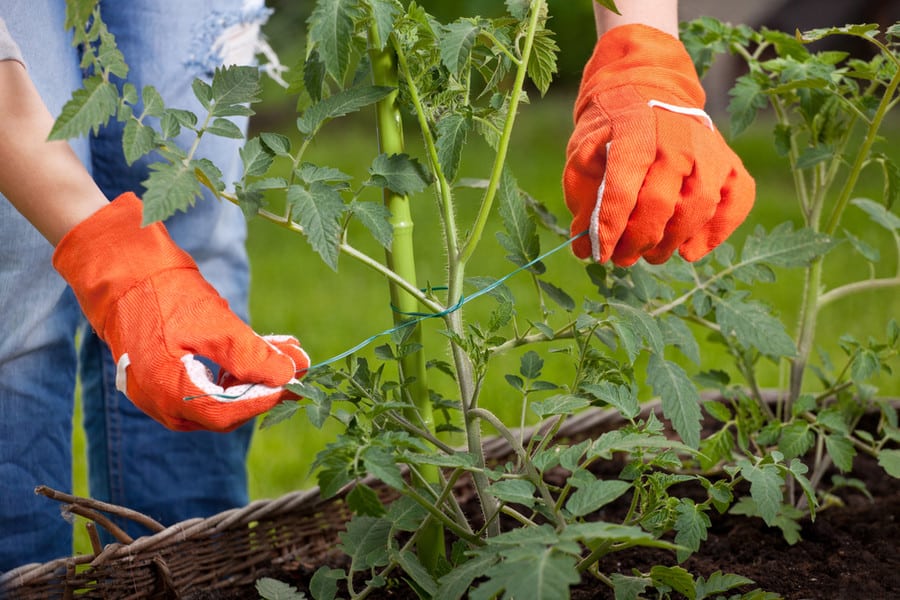
Ropes are used in gardening as well. Plants, like beans or vine tomatoes, need trellises and cages so they can grow upward. To tie up the plant to the tool, a rope is necessary.
The best rope for gardening tie-ups is sisal rope. Sisal rope is a natural fiber robe. Since the rope is organic, it is safe to introduce into the garden.
Sisal rope doesn’t last very long. For other purposes, this is a disadvantage. For gardening purposes, however, this is an advantage.
You probably wouldn’t need garden tie-ups that last long, after all. Sisal rope holds a knot well and over time, it will decompose slowly in the soil.
For gardening tie-ups, the worst type of rope is polyester. You don’t want a synthetic fiber made of manufactured and heavy-duty material near your garden, especially if you’re growing food in it.
35. Fencing tie-ups

For fencing tie-ups, your best option is the manila rope. Manila rope is made of 100%, all-natural hemp fibers. This is why it is great for any decorative use. Yes, including fencing.
Manila rope is not only aesthetically appealing but also strong. It is definitely a go-to option when you look for a rope for any decorative use.
Another reason to choose manila rope is that it is snap-resistant and inexpensive.
The least ideal choice for fencing is polypropylene rope. Polypropylene indeed has many amazing qualities but it is just difficult to work with for fencing.
36. Crafting

Although there is no such thing as right or wrong in art, not all ropes are equal. Some types of rope are better for crafting than others.
For crafting, the most popular options are manila, cotton, and polyester ropes. Manila and cotton are organic ropes. They are made from natural fibers. Cotton, in particular, is easy on the hands as well.
Polyester has many colors to choose from. Meaning, it can fit just about any décor you have in your home.
As for the construction, a nice twisted style is better than a braid one.
The worst type of rope for braiding is polypropylene. It is true that polypropylene is an excellent multi-purpose rope but, more often than not, it doesn’t fit the decoration in the home.
37. Braiding

Braided rope, be it single- or multi-strand, is known as the strongest and most durable rope construction. The braid makes the rope thicker and reduces its stretch, making it ideal for various applications.
There are many types of rope out there. Some types suit braining, some others don’t. If you’re looking for a rope that does, your best option is synthetic rope and your worst is the natural fiber.
Each type of rope has its own strengths, weaknesses, and common uses. Regardless of what your need is, checking the rope’s strengths, weaknesses, and common uses before buying is always a good idea.
